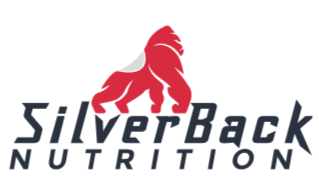Making whey protein is not a difficult process and can have health benefits too. Whey is a dairy product and the whey liquid is extracted from curd or cheese-making process and it is a by-product. Milk is mainly comprised of two proteins: whey and casein. In the process of obtaining the whey liquid, cow milk is curdled and solidified to produce cheese and curd, the strained liquid that remains is known as whey and it contains essential vitamins, minerals, amounts of fats, and lactose.
Whey liquid is of two types: Acid whey and sweet whey. Acid whey is the liquid that is extracted from the making process of dairy products of acid types such as; strained yogurt, greek yogurt, acid-curdled cottage cheese, and ricotta cheese. Sweet Whey is the whey liquid obtained from the manufacture of rennet types of cheese like cheddar, and Swiss cheese. The whey protein made from this by-product is whey liquid and can have health benefits, risks, and effects as well.
Importance of Whey Protein
Protein is one of the essential elements in building and strengthening muscle mass. The whey protein is made from the whey liquid and transformed into a protein powder by separating the solid proteins from the liquid and drying. It contains the amino acid that is required in our body to gain healthy muscles and repair the muscle tissues that are damaged.
Reduce Cholesterols: Whey protein has health benefits too. The human body can face many heart diseases like heart attack, and stroke that are caused by high cholesterols present in the body. Whey Protein can reduce the amount of cholesterol present in the body and make it healthy.
Eases Inflammation: The body, muscles, tissues, and our internal as well as external organs get inflamed while suffering from diseases like arthritis, heart diseases, gastritis, and other inflammation-causing diseases. Whey protein can reduce short-term inflammation in the body and make blood flow better.
Boost Immunity: Whey protein contains amino acids, potential antioxidants, and other properties that can boost and strengthen our immunity and fight off the disease-causing viruses inside the human body. It is scientifically proven that taking whey protein supplements can protect the cells in the body from radical toxins, germs, and viruses.
Methods and Steps to Prepare Whey Protein
Whey protein is a solid powder that is being sold in the markets. It has a high nutritional value and can be taken as a health supplement.
Here are some of the steps or methods that portray how the whey protein is being made and prepared:
Milk from Cows: As Whey protein is a dairy product, it is obtained and prepared from cow milk. Farms containing healthy cattle are being chosen for this process. Cows are being fed and nurtured properly and are being milked more than 3 times a day. The raw milk obtained from the cows contains 4.1% fat, 5% lactose, and 3.5% protein and is high quality, free of toxins and pesticides.
Transport of Milk: The milk obtained from the cows is transferred to the manufacturing and production plants, through large refrigerated tankers trucks. These trucks are cold and insulated so that the milk does not get spoiled and some of the bacteria get killed due to extreme cold before reach the factory.
Pasteurization: After the milk has reached the manufacturing plant, it goes through pasteurization because the milk can contain harmful bacteria. To kill and get rid of the bacteria in this process, the milk is heated at a high temperature and then cooled. This process does not rid the healthy properties of the milk and just kills the bacteria.
Separation of Milk: After the process of pasteurization, the obtained milk contains 80% casein and 20% whey. Then the process of milk separation starts, enzymes are added to the pasteurized milk to separate the curd or solid milk parts and whey. The curd is the main product and whey is the by-product of the cheese-making or milk separation process.
Membrane Filtration/Micro Filtration: The by-product or the liquid whey that is extracted from the milk after the milk separation process, goes through an ultimate concentration and filtration process to obtain the main whey protein liquid. With the help of machinery containing ceramic micro-filters, the whey liquids are purified and filtered to remove the water, carbohydrates fats, and lactose resulting in the production of just liquid Whey protein concentrate (WPC).
Drying and Producing Powder: This is the final process of obtaining whey protein. In the post-filtration process, whey protein concentrate liquid is put into a container that is a drying machine, which helps to separate the liquid and obtain the whey protein by the process of spray drying. The hot and cold air in the dryer removes or evaporates the water producing solid whey powder and ensuring that no nutrition and proteins are removed.
Mixing and Blending: Hydrolyzed whey protein and whey protein concentrate are the best quality of whey protein and are transferred into the last process of mixing and blending it with different organic flavors and other useful nutrients and ingredients before packaging.
Packaging: This is the process that includes testing the product in the lab for human consumption, and is prepared to be packed and sealed in containers in the warehouses and factories before being available to the markets. The end and final packaged products are sold in the markets for the customers.
Interesting Facts about Whey Protein
The usage and consumption of whey protein are not harmful, but it is effective and useful to gain healthy muscles. It would not make or develop the woman's body into more of a man's body. Whey protein powder can be added to a healthy diet of fitness freak women.
Whey proteins are sometimes mistaken as harmful steroids. But they are not steroids, and as it is obtained from milk, they provide proteins and nutrition to the human body.
Mild whey protein powder in small amounts can be consumed by children as well and it is considered safe.

